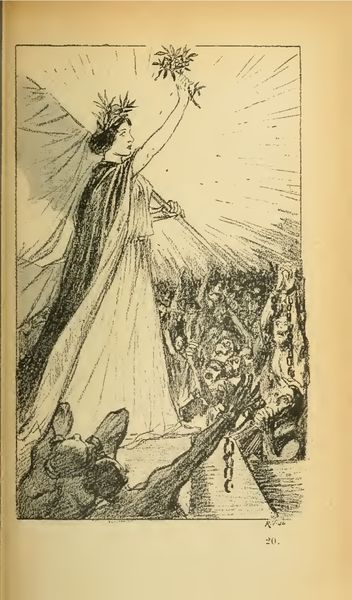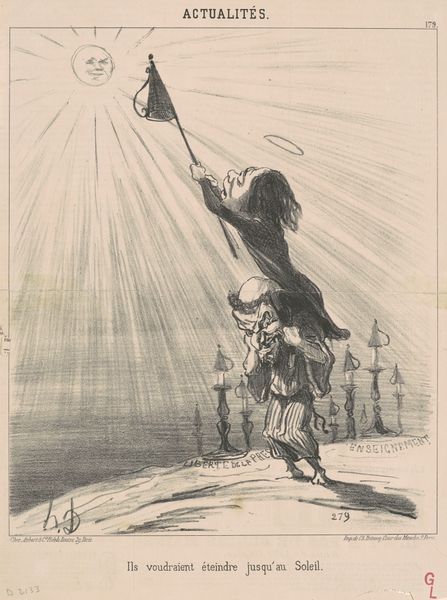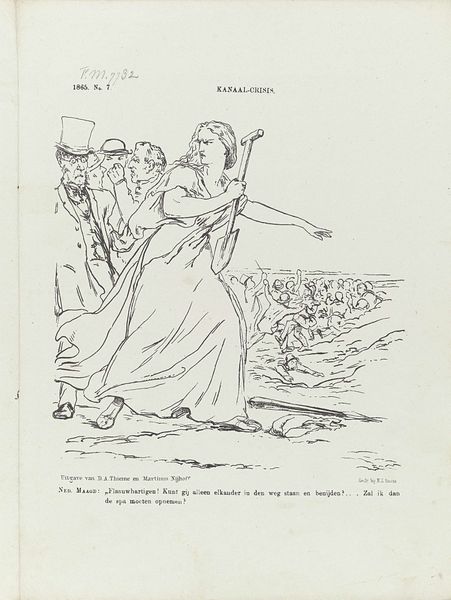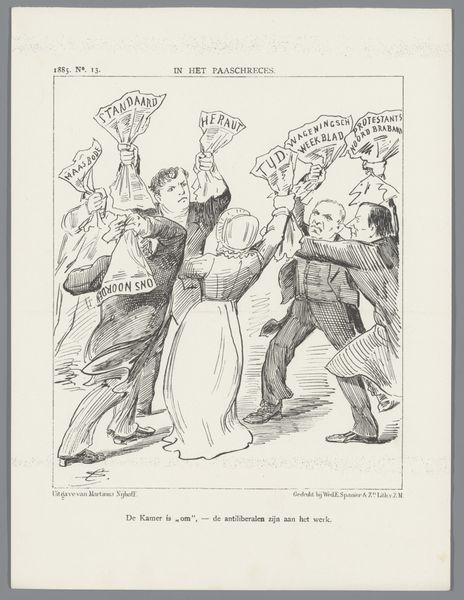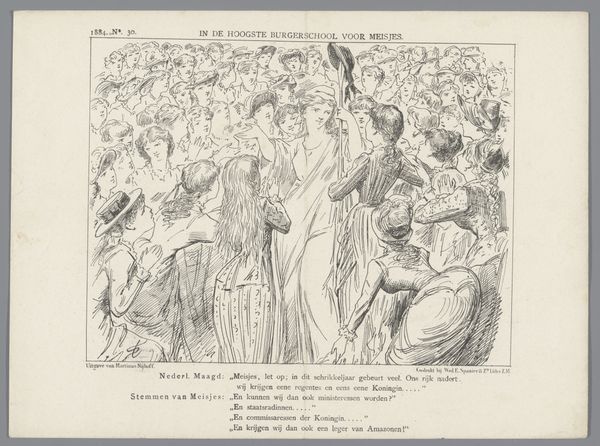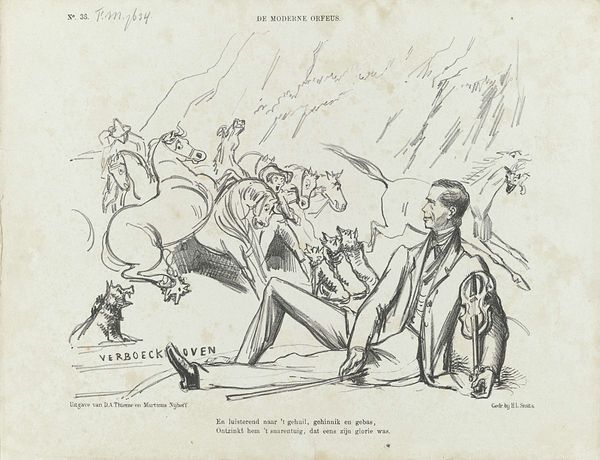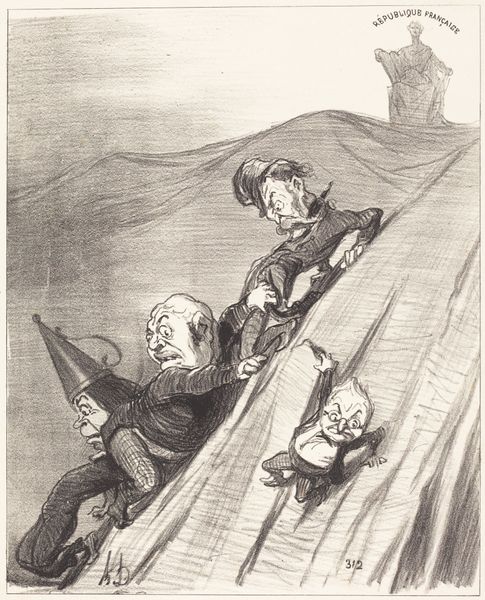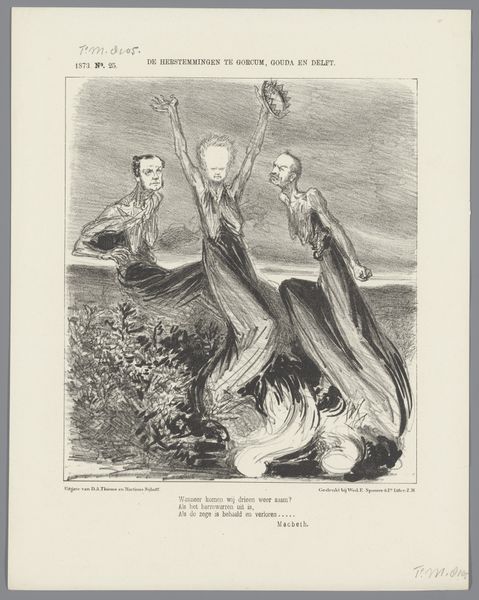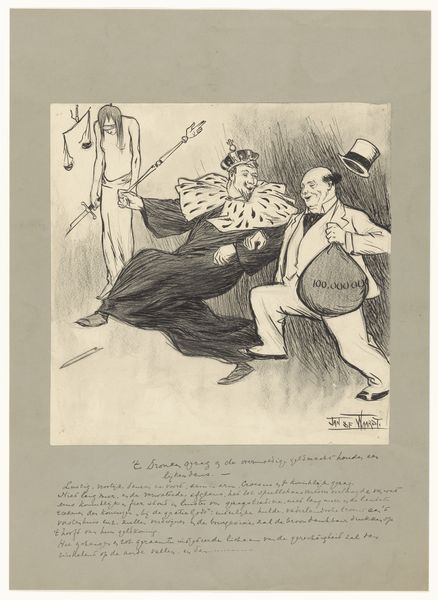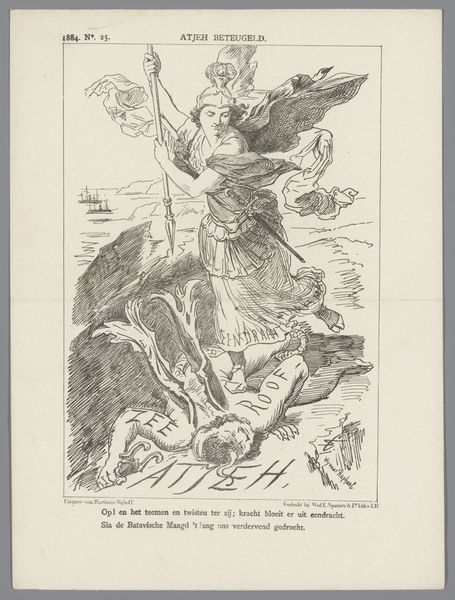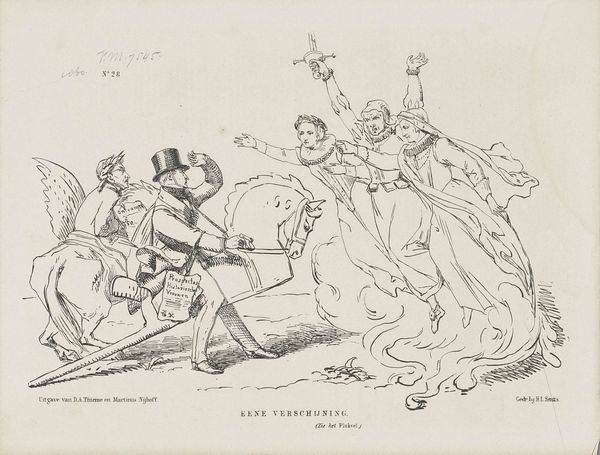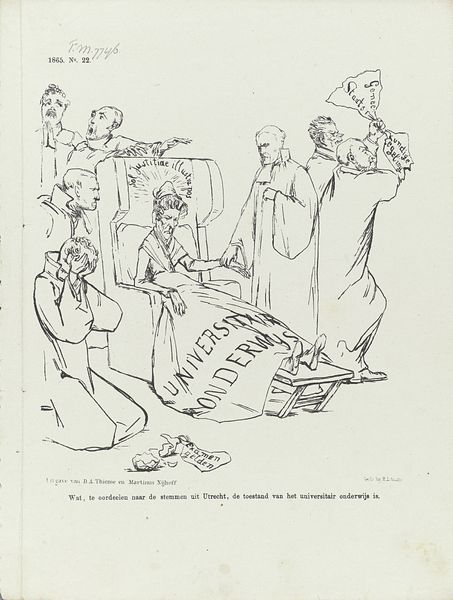
China prentbriefkaart 'Mevrouw BESCHAVING tot haar slachtoffers' c. 1900 - 1918
0:00
0:00
Dimensions: height 100 mm, width 145 mm
Copyright: Rijks Museum: Open Domain
Curator: This powerful piece, dated circa 1900-1918, is a prentbriefkaart—a printed postcard—from China, titled "Mevrouw BESCHAVING tot haar slachtoffers," or "Mrs. Civilization to her Victims," rendered in ink and drawing. Editor: Whoa. Talk about an instant mood. That central figure, almost spectral in that pale wash of color against the darker ground, radiates an… uncomfortable… glow. And the figures at her feet, that sea of desperation. It's intense! Curator: It is, intentionally so. It is clearly an allegorical work using caricature to address civilization and victimization. Editor: You're right, that exaggerated form and the surrounding people... the symbolism is really heavy, right? She is supposed to stand for civilization, with what looks to be an extremely unflattering interpretation. Almost vulture-like in features, that dress... it almost appears like it's consuming or suffocating the figures beneath it! Curator: Indeed. The "Orientalism" apparent in the composition suggests the artist critiqued the imposition of Western values or colonialism. The surrounding figures, clearly struggling, point towards a destructive force hidden beneath the guise of progress or advancement. The illustration seems post-impressionistic. Editor: The handwritten script just under the main characters is powerful too! “Mevrouw BESCHAVING tot haar slachtoffers: Geloof me, menschen, zóó had ik 'theusch niet bedoeld”. Curator: Right. The script translates to "Believe me, people, that's truly not how I meant it." which emphasizes the deceptive nature of "civilizing" missions and suggests unintended, but disastrous, consequences. The use of symbolism highlights the artist's skepticism towards cultural exchange, pointing out imbalances in power. It reflects the ambivalence of progress itself. Editor: What hits me hardest is how little has changed, really. That uneasy relationship between progress and suffering, advancement and exploitation, it's just so… timeless, isn't it? A sharp, uncomfortable reflection then, and honestly, equally now. Curator: Agreed, that resonance across time is exactly where its power lies—as both a critique of the past, and perhaps, a cautionary symbol for the future.
Comments
No comments
Be the first to comment and join the conversation on the ultimate creative platform.
